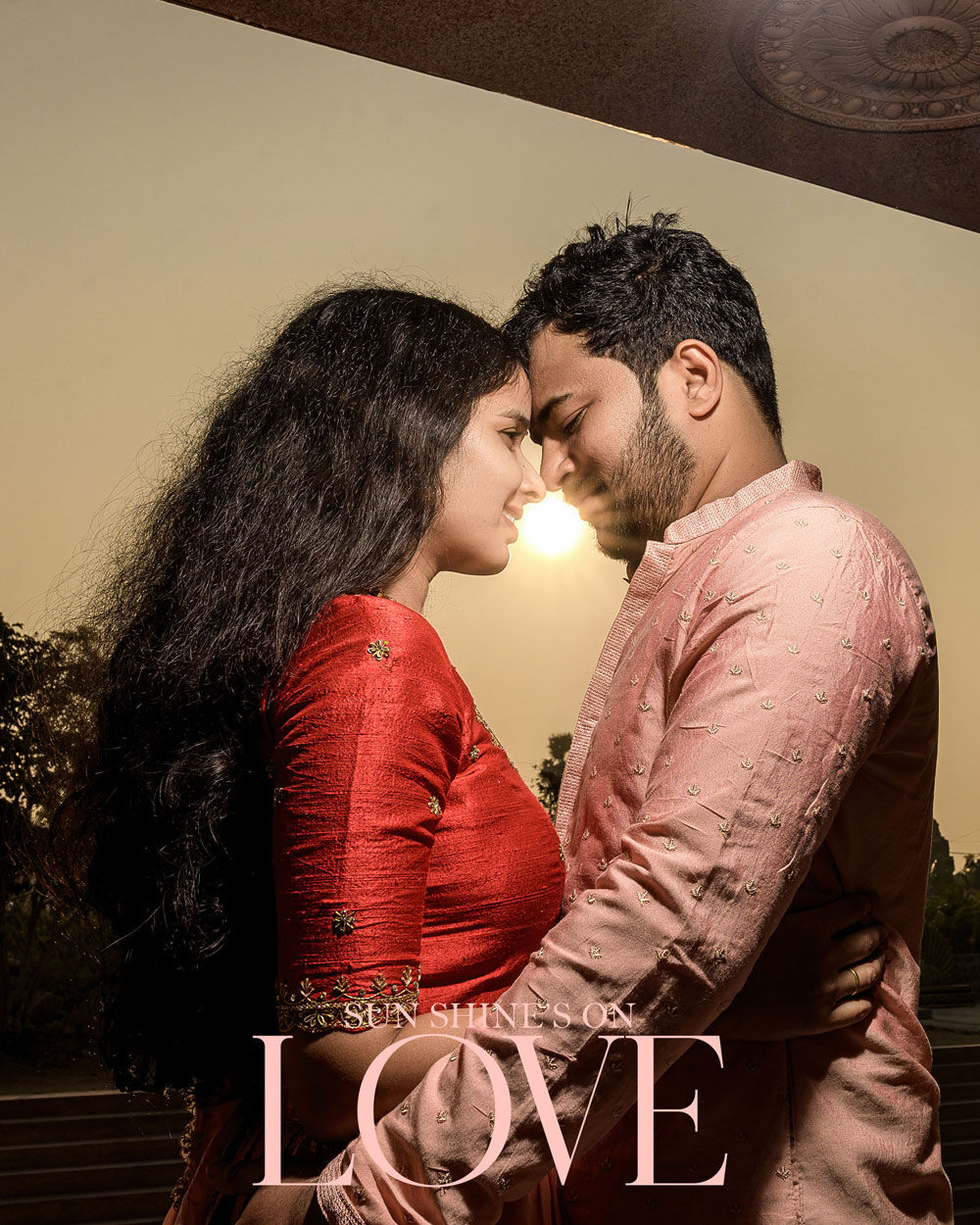Mastering natural light for outdoor wedding photography is essential for creating stunning and timeless images. Here are some techniques to help you harness the beauty of natural light:
- Understand the Light: Observe how light behaves in different outdoor environments, such as open fields, wooded areas, or near bodies of water. Pay attention to the direction, quality, and intensity of light throughout the day.
- Golden Hour Magic: Take advantage of the golden hour, the period shortly after sunrise or before sunset when the light is soft, warm, and diffused. This magical light enhances skin tones and creates a romantic atmosphere for wedding portraits.
- Positioning the Couple: During outdoor shoots, position the couple so that the light falls evenly on their faces, avoiding harsh shadows or squinting. Experiment with different angles to find the most flattering light.
- Use Reflectors or Diffusers: Reflectors bounce light onto the subjects, filling in shadows and adding a flattering glow to the portraits. Diffusers soften harsh sunlight, creating a more even and pleasing light for portraits.
- Embrace Shade: In harsh midday sun, seek out shaded areas such as under trees or buildings to diffuse the light and create soft, flattering portraits. Avoid direct overhead sunlight, which can create unflattering shadows.
- Expose for the Highlights: When shooting in bright sunlight, expose for the highlights to avoid blown-out areas in the image. This ensures that details in the highlights are preserved, even if it means sacrificing some shadow detail.
- Utilize Backlighting: Experiment with backlighting, where the light source is behind the subject, to create a dreamy and ethereal effect. This technique can produce stunning silhouettes or rim lighting around the couple.
- Keep an Eye on the Weather: Be prepared to adapt to changing weather conditions during outdoor shoots. Cloudy days can provide soft, diffused light ideal for portraits, while rainy days offer unique opportunities for creative shots with umbrellas or reflections.
- Stay Flexible: Outdoor lighting conditions can change rapidly, so stay flexible and be prepared to adjust your shooting technique accordingly. Keep an eye on the changing light and adapt your settings as needed to maintain optimal exposure.
- Experiment with Composition: Use natural elements such as trees, flowers, or architectural features to frame your subjects and add visual interest to your compositions. Experiment with different angles and perspectives to create dynamic and captivating images.
- Post-Processing Touches: In post-processing, fine-tune your outdoor wedding photos by adjusting exposure, contrast, and color balance to enhance the natural beauty of the scene. Avoid over-editing, and aim for a timeless and natural look that complements the outdoor setting.
By mastering these techniques and embracing the beauty of natural light, you can create breathtaking outdoor wedding photos that capture the romance and magic of the special day.

Leave a Reply